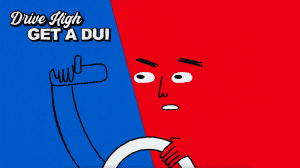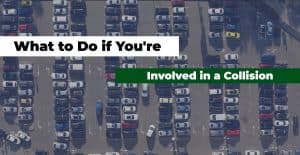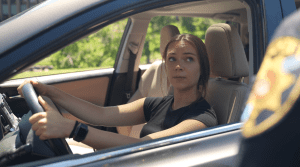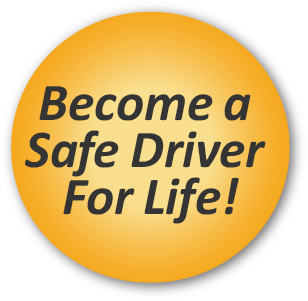For new and experienced drivers alike, sharing the road with other motorists can sometimes be a frustrating ordeal. While you can make your experience as a driver as safe and seamless as possible by adhering to your local laws and adopting best driving practices, you can’t control the actions or behaviors of other drivers.
There are a few bull-headed personalities on the road who consciously engage in inconsiderate behavior, but for the most part, frustrating scenarios occur because even seasoned motorists make mistakes or because drivers are unaware that their actions are stressful for others.
It’s inevitable that you will encounter instances where other parties on the road cause you to feel stressed and agitated, and while there is unfortunately no way to prevent those moments from occurring, you can control how you react.
To help you out, here are a few of the most common frustrations caused by other drivers as well as advice on how to calmly and safely deal with them:
Sharing the Road with Distracted Drivers
Whether drivers are distracted because they are texting or talking on the phone, conversing with passengers, eating or drinking while driving, or getting lost in their own thoughts, their inattentiveness is naturally irksome. The most obvious issue with distracted drivers is that their lack of alertness poses a risk to themselves and those around them, as attentiveness is one of the pillars of safe driving. Additionally, a distracted motorist can cause general frustration by holding up traffic, failing to take his/her turn at an intersection, etc.
What can you do?
The first thing you can do is know the signs of a distracted driver. A motorist may be distracted if he/she:
- Alternates between slowing down and speeding up in an unpredictable manner
- Holds a phone up to his/her ear
- Looks down towards his/her lap often (as if the driver is texting)
- Eats food
- Has trouble staying centered in a lane
- Signals for a lengthy period of time without turning or changing lanes
- Stops for longer than necessary at stop signs, intersections, or traffic lights
- Looks over at a passenger frequently rather than focusing on the road
- Rubbernecks at something happening outside of the vehicle
To keep yourself safe, always assume that a distracted driver does not see you. It may be frustrating to wait for the person to acknowledge you at an intersection, but waiting until you are noticed can prevent a collision. When driving, you can minimize risk by doing what you can to put as much distance between you and the distracted driver as possible, as distracted drivers are more likely to slam on the brakes or make an irresponsible maneuver. If you can, safely change lanes and move ahead, or slow down and allow the driver to move ahead of you.
Being Tailgated By a Speeder
Tailgating occurs when a driver behind you follows too closely, and unfortunately, it is a situation that virtually every driver experiences and a large portion are guilty of doing themselves. Some people tailgate because they are in a hurry, others are aggressively impatient, and the rest are unaware that they are too close for comfort.
The standard guideline in Colorado is to leave three seconds between your vehicle and the one ahead of you so that you have space and time to react to a sudden motion. You can put this rule into action by picking a landmark or point of interest that the vehicle ahead of you passes, counting three seconds, and then seeing if you pass the same landmark before the three seconds is up. If you do, it’s best to slow down. If the road conditions are bad, it’s helpful to increase your distance even further.
What can you do?
If you’re being tailgated, it’s helpful to first assess whether you are unknowingly driving under the speed limit. If you are and it is safe to do so, speed up so that you can keep up with the flow of traffic. Similarly, ensure that you are driving at a consistent speed because if you’re fluctuating, the driver may assume that you are distracted and be hesitant to pass you.
If you are maintaining the speed limit and a vehicle behind you is uncomfortably close, avoid the pressure to speed. Instead, take a deep breath, and remain calm so that your nerves or irritation don’t lead to hasty decision making. If you are able to safely do so, change lanes and allow the tailgater to pass you. If you cannot move over, put on your signal to let the driver know that you will turn when it is possible to do so, even if that means pulling over or turning in somewhere just to let the driver pass.
It may feel like you’re giving into the driver’s bad behavior, but the best thing you can do when a driver is acting irresponsibly is to distance yourself from him/her when possible.
Being Held Up By Someone Driving Slowly or Hesitantly
On the opposite end of the spectrum, there are the drivers who cause frustration due to their slow and hesitant nature. They may drive under the speed limit, causing a lineup of cars behind them. Similarly, they may be hesitant to make a turn or pass through a yellow light even when it is safe to do so.
Aside from the irritating nature of being held up by these snail-paced motorists, driving under the speed limit can disrupt the flow of traffic, and hesitancy can lead someone to make sudden, unpredictable maneuvers, both of which can lead to dangerous scenarios.
What can you do?
Again, safely putting distance between you and a slow driver is your best bet, but when that’s not an option, the only thing to do is to patiently wait out the situation and understand that there are many reasons why someone may be going slow, such as being a new and inexperienced driver, being lost and unsure of where to turn, etc. It may be tempting to honk your horn to encourage the motorist to speed up, but horn-honking should be reserved for urgent situations rather than as a way to express mild irritation. To avoid feeling stressed out if you end up behind a slow driver, try to leave early if you have to be someplace at a scheduled time. Planning for the unexpected will allow you plenty of time to punctually arrive at your destination, regardless of how slowly the car in front of you is going.
Encountering Unnecessary Road Rage
There will always be those drivers who fly off of the handle when they feel as though a fellow motorist has erred in some way, even if the fault lies entirely with them. In fact, many drivers with road rage engage in aggressive driving behaviors that often create undue risk, such as weaving in and out of lanes, failing to use their turn signals, cutting other motorists off, failing to allow others to merge, and exceeding the speed limit.
A driver with road rage will commonly honk aggressively, make obscene gestures, roll down the window and yell, or stare down the driver who he/she is upset with. This can naturally cause the target of the road rage to feel fearful or even develop feelings of anger as a result of being treated antagonistically.
What can you do?
While it may be tempting to take the bait and angrily react to the road rage, doing so can cause the situation to escalate. The best thing to do is to avoid eye contact and, as the strategies mentioned above, create distance between you and the driver, such as by yielding or changing lanes. It helps to remember that drivers with bad road rage tend to engage in this behavior frequently, and it is not in any way personal, regardless of how it may feel in the moment. Engaging with the driver can come across as confrontational, so take a deep breath and remind yourself that it’s not worth the effort to take time out of your day to interact with a hot-head.
In the unlikely scenario that you feel truly threatened by a driver, find a safe, public place to pull over and call for emergency help.
Closing Up
As long as you take proper precautions and ensure that you are following the laws and practicing conscientious driving practices, your typical day as a driver will likely be fairly uneventful, which is a good thing. That being said, sharing the road with others will inevitably result in the occasional frustrating moment. If you remind yourself that the behavior of other motorists is out of your control and is also not personal, you can calmly use the parts of the situation that are in your control to get yourself safely out of the agitating scenario.
Learn How to Drive Safe for Life with DriveSafe Driving Schools!
DriveSafe Driving Schools is Colorado’s largest and most trusted drivers ed provider. Between comprehensive drivers education packages, private driving lessons, adult driving lessons, and our defensive skills course, we have helped over 100,000 student drivers across our 12 locations master the skills needed to become safe drivers for life.
For information on how we can help you reach your behind-the-wheel goals, browse our services or get in touch with any questions. We are here to help!













